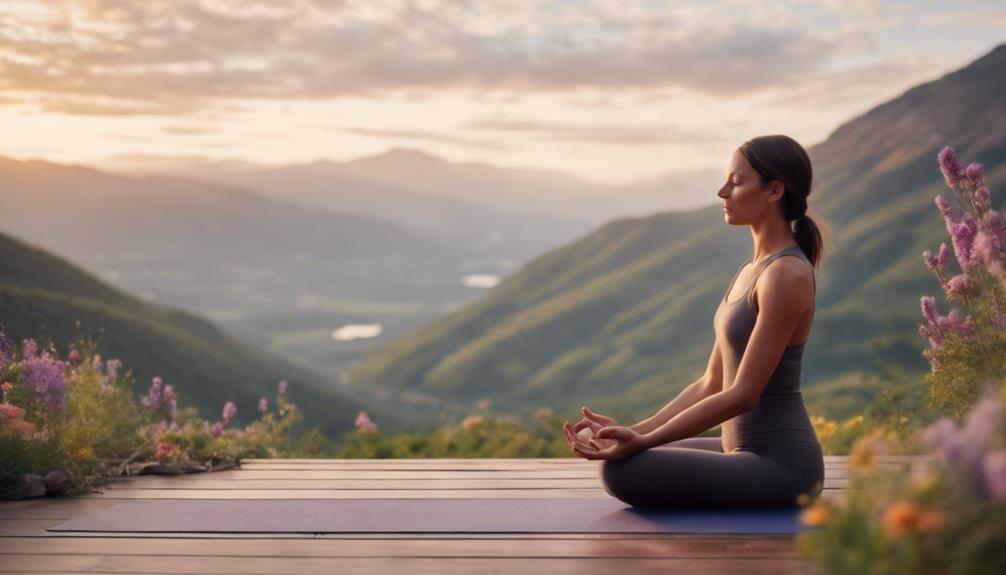How Do You Practice Yoga

Yoga is an ancient practice that has gained immense popularity worldwide due to its numerous physical, mental, and spiritual benefits. If you’re wondering how to practice yoga effectively, this guide will walk you through essential steps, tips, and techniques to help you embark on your yoga journey. Whether you’re a beginner or looking to deepen your practice, understanding the core principles of yoga will enhance your experience and well-being.
Understanding Yoga: What Is It and Why Practice?
Before delving into how to practice yoga, it’s crucial to understand what yoga is. Originating from ancient India, yoga is a holistic practice that encompasses physical postures (asanas), breathing techniques (pranayama), meditation, and ethical principles. Practicing yoga can improve flexibility, strength, and balance while also promoting mental clarity and emotional stability. By incorporating yoga into your routine, you can reduce stress, enhance your focus, and foster a deeper connection with yourself. Understanding these benefits will motivate you to maintain a consistent yoga practice.
Choosing the Right Type of Yoga for You
As you embark on your yoga journey, it’s important to choose the right style that aligns with your goals and preferences. There are various types of yoga, including Hatha, Vinyasa, Ashtanga, Iyengar, and Yin Yoga, among others. Hatha yoga is an excellent choice for beginners, focusing on basic postures and breathing. Vinyasa is more dynamic, linking breath with movement, while Ashtanga follows a set sequence of poses. Yin Yoga, on the other hand, involves longer-held postures for deep relaxation. Researching these styles will help you determine how to practice yoga effectively and find the one that resonates with you.
Creating a Dedicated Space for Yoga Practice
Having a designated space for your yoga practice can significantly enhance your experience. Choose a quiet, comfortable area in your home where you can practice without distractions. Ensure the space is clean, well-lit, and possibly adorned with calming elements such as plants, candles, or artwork that inspires you. A yoga mat is essential, providing the right grip and cushioning for your practice. This dedicated space will serve as your sanctuary, promoting a consistent yoga routine that fosters both physical and mental well-being.
Related Posts:
Establishing a Regular Yoga Routine
Consistency is key when learning how to practice yoga. Establishing a regular routine helps you develop a deeper connection with your practice. Start by setting aside specific times during the week dedicated solely to yoga. Whether you prefer morning sessions to energize your day or evening classes to unwind, find what works best for you. Aim for at least two to three sessions weekly, gradually increasing the frequency as you become more comfortable. Remember, it’s better to practice for shorter durations consistently than to have infrequent, lengthy sessions.
Incorporating Breathwork into Your Yoga Practice
Breath is a fundamental aspect of yoga. Understanding how to incorporate breathwork (pranayama) into your practice can enhance your overall experience. Focus on your breath as you move through each pose, inhaling to expand and exhaling to deepen your stretches. Techniques such as Ujjayi breath, which involves a slight constriction at the back of the throat, can help you maintain rhythm and concentration during your practice. By being mindful of your breath, you will not only improve your physical performance but also cultivate a sense of tranquility and mindfulness throughout your sessions.
Listening to Your Body: Progressing Mindfully
As you learn how to practice yoga, it’s essential to listen to your body and progress mindfully. Each individual’s body is unique, and yoga is not about achieving perfect poses but rather about connecting with yourself. If you feel discomfort or pain in any position, modify the pose or take a break. Use props like blocks, straps, or bolsters to support yourself and enhance your practice. As you become more attuned to your body’s needs, you’ll gradually improve your flexibility and strength while preventing injuries. Remember, yoga is a personal journey; honor where you are today.
Exploring Meditation and Mindfulness in Yoga
In addition to physical postures, meditation and mindfulness play a significant role in yoga practice. Learning how to practice yoga also involves cultivating a meditative mindset. Begin and end your sessions with a few minutes of meditation, focusing on your breath or setting an intention for your practice. Mindfulness during yoga means being fully present in each movement and sensation, allowing for a deeper connection to your body and mind. As you incorporate meditation into your routine, you may find increased clarity, reduced stress, and an enhanced sense of well-being.
Connecting with the Yoga Community
While practicing yoga at home can be fulfilling, connecting with a yoga community can provide additional support and motivation. Consider joining local classes, workshops, or online yoga communities to share experiences and learn from others. Engaging with fellow practitioners can provide valuable insights, encouragement, and a sense of belonging. Whether through group classes or online forums, being part of a community can enhance your practice, making it more enjoyable and fulfilling.
In conclusion, learning how to practice yoga is a rewarding journey that encompasses physical, mental, and spiritual growth. By understanding the principles of yoga, choosing the right style, creating a dedicated space, establishing a routine, incorporating breathwork, listening to your body, exploring meditation, and connecting with a community, you can cultivate a fulfilling practice. Remember, the journey of yoga is personal and unique to each individual; embrace it with an open heart and mind. Happy practicing!Yoga Home